
Paul Klee was a Swiss-born German artist. His highly individual style was influenced by movements in art that included expressionism, cubism, and surrealism. Klee was a natural draftsman who experimented with and eventually deeply explored color theory, writing about it extensively; his lectures Writings on Form and Design Theory, published in English as the Paul Klee Notebooks, are held to be as important for modern art as Leonardo da Vinci's A Treatise on Painting was for the Renaissance. He and his colleague, Russian painter Wassily Kandinsky, both taught at the Bauhaus school of art, design and architecture in Germany. His works reflect his dry humor and his sometimes childlike perspective, his personal moods and beliefs, and his musicality.
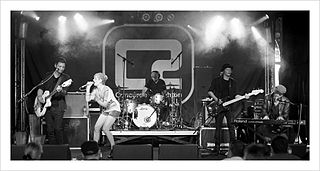
Klee is a German pop band from Cologne. Named after German painter Paul Klee, the band was formed in 2002 by singer Suzie Kerstgens and musicians Sten Servaes and Tom Deininger. Klee's brand of pop music incorporates electronic as well as acoustic sounds and, in more recent years, the band has embraced chanson and schlager. Four of Klee's albums have entered the top 30 of the German albums chart.

Alfred Mombert was a German poet.

Willi Baumeister was a German painter, scenic designer, art professor, and typographer. His work was part of the art competitions at the 1928 Summer Olympics and the 1932 Summer Olympics.
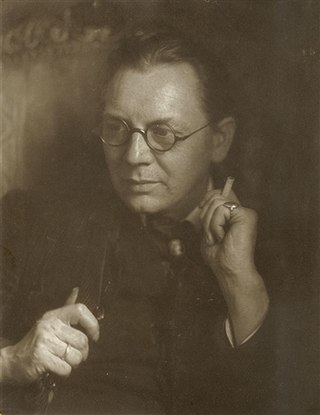
Hugo Erfurth was a German photographer known for his portraits of celebrities and cultural figures of the early twentieth century.

Paul Klee Notebooks is a two-volume work by the Swiss-born artist Paul Klee that collects his lectures at the Bauhaus schools in 1920s Germany and his other main essays on modern art. These works are considered so important for understanding modern art that they are compared to the importance that Leonardo's A Treatise on Painting had for Renaissance. Herbert Read called the collection "the most complete presentation of the principles of design ever made by a modern artist – it constitutes the Principia Aesthetica of a new era of art, in which Klee occupies a position comparable to Newton's in the realm of physics."

Hans-Jürgen Schult, known professionally as HA Schult, is a German installation, happening and conceptual artist known primarily for his object and performance art and more specifically his work with garbage. He is one of the first artists to deal with the world's ecological imbalance in his work and has therefore been called an "eco-art pioneer". His best known works include the touring work, Trash People, which exhibited on all continents, and the Save The Beach hotel, a building made of garbage.

The Märkisches Museum is a museum in Mitte, Berlin. Founded in 1874 as the museum of the city of Berlin and its political region, the March of Brandenburg, it occupies a building on the northern edge of Köllnischer Park, facing the Spree, which was designed by Ludwig Hoffmann and completed in 1908. It is now the main facility of the Stiftung Stadtmuseum Berlin, Landesmuseum für Kultur und Geschichte Berlins, the City of Berlin museum foundation, which also operates four other sites.

Juno and Argus is a 1610 painting by Peter Paul Rubens, depicting Juno and Argus. It is now in the Wallraf-Richartz Museum in Cologne.

Death and Fire, known in German as Tod und Feuer, is an expressionist painting by Paul Klee, from 1940. It is on display at Zentrum Paul Klee, in Bern.

Theodor Fischer (1878–1957) was a Swiss art dealer and auctioneer in Lucerne who after the First World War built a highly successful firm of auctioneers that dominated the Swiss art market. In 1939 he was the auctioneer at the infamous Grand Hotel auction of "degenerate art" removed from German museums by the Nazis. During the Second World War he played a key part in the trading of art looted by the Germans from occupied countries.

Escape from Tibet is a 2012 Swiss-German-Tibetan Drama film.
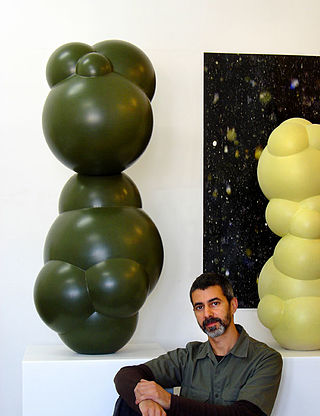
David Fried is an American interdisciplinary, contemporary artist.
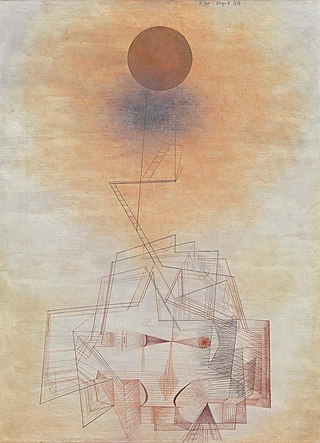
Limits of Reason is a 1927 painting by Paul Klee (1879-1940). It is in the permanent collection of the Pinakothek der Moderne—Pinakothek of modern art—in central Munich's Kunstareal.

Ad Parnassum is a pointillist painting by Swiss-born artist Paul Klee. The painting is currently in the Kunstmuseum Bern.
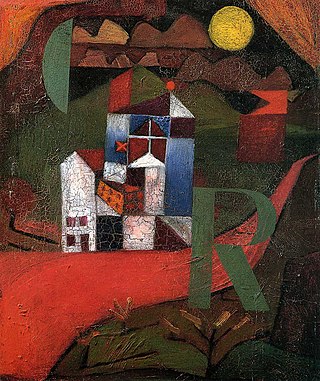
Villa R is an oil-on-carton painting from 1919 by the Swiss-born German artist Paul Klee.

Hanna Bekker vom Rath was a German painter, collector, patron and gallerist.

The Donkey Rider is a watercolor created in 1914 by the German Expressionist painter August Macke. It was created during the art-historically significant trip to Tunisia that he took with fellow painters Paul Klee and Louis Moilliet in April 1914. The watercolor is now in the collection of the August-Macke-Haus in Bonn.

Swamp Legend ("Sumpflegende") is an oil-on-cardboard painting by Swiss German painter Paul Klee, from 1919. It has been in the Städtische Galerie im Lenbachhaus, in Munich, since 1982, but its ownership was disputed due to its provenance. The painting was one of the works considered by the National Socialists as “degenerate art” and was confiscated from the Landesmuseum Hannover, in Hanover, in 1937. However, it was not owned by the museum, but was there on a loan from the art historian Sophie Lissitzky-Küppers. In July 2017 it became known that her heirs had reached an agreement with the city of Munich abouts its ownership.



















